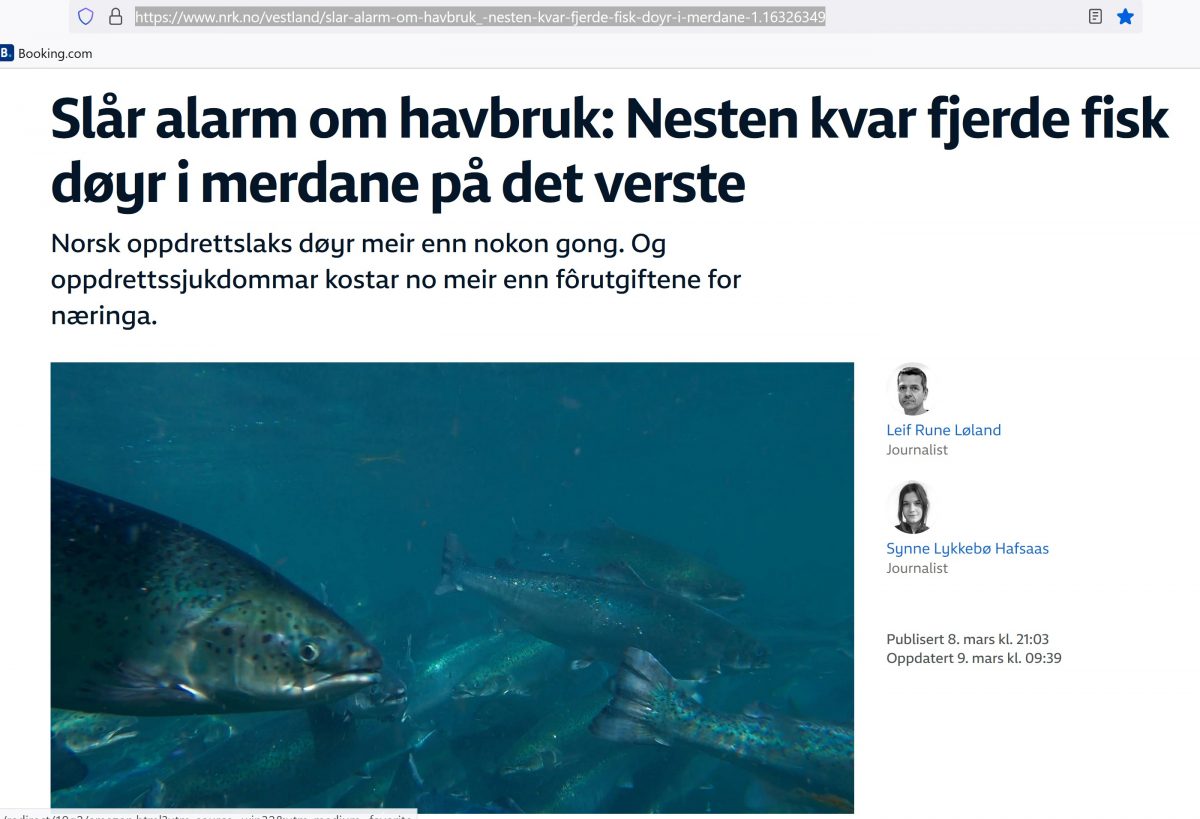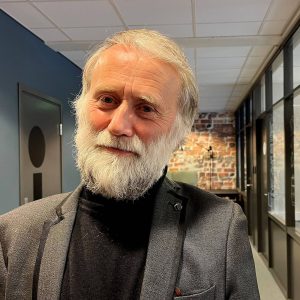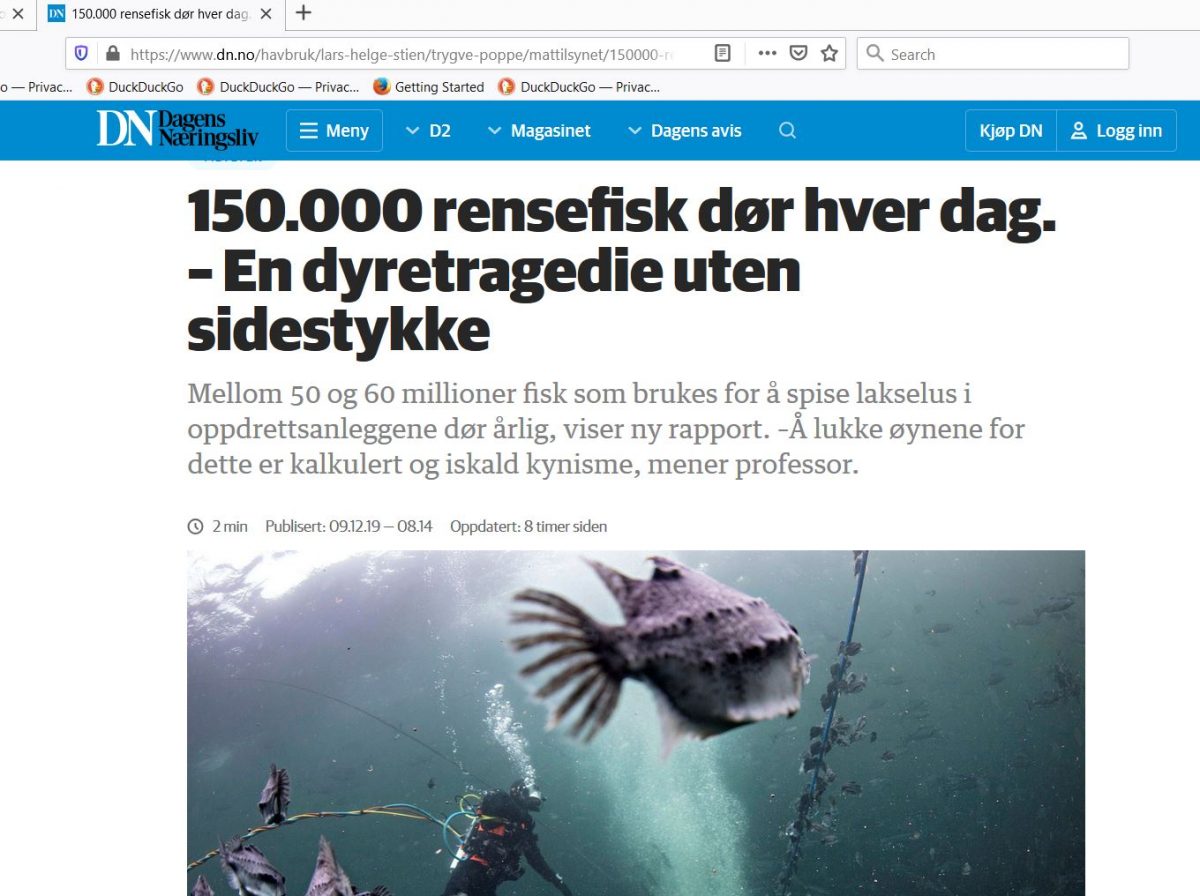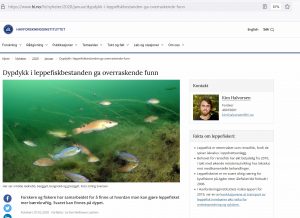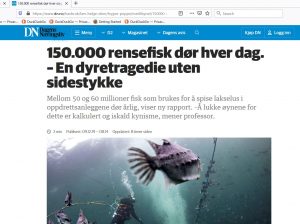https://www.nrk.no/vestland/slar-alarm-om-havbruk_-nesten-kvar-fjerde-fisk-doyr-i-merdane-1.16326349
It says nearly every 4th fish dies in the nets at its worst.
It is easy to think of fish as – what,nothing – unfeeling, just responding so stimulus like machine.
I guess that makes it easier to eat, or fish. But they are animals, they play just like all animals, they feel and they feel distress
just like us and all animals.
Consider, every type of agriculture on land has to have certain things in place for it to work. Growing medium, fertilizer or in the case of animals feed, oxygen, suitable conditions – extraction of waste products, control of pests.
Not fish rearing.
Thats why its so lucrative and thats why its wrong in every way.
These fish are subject to continuous attack from fish lice, the fish lice attacks lead to fungal infections and so the fish are slowly eaten alive.
Some just die, others die from one of the many diseases that have been bought about by the industry itself, yet others die from the treatment for these diseases and lice treatments.
Its not the fault of the fish lice – they are a perfect part of nature, its just that they were not designed by nature with salmon farming in mind.
Just like on land, vast amounts of pests gather where crops are sown because their job in nature is to keep the numbers down, by doing this they also keep their target species healthy as the weak and sickly are selected first———————— thats nature.
The article says Totalt døydde 92,3 millionar laksar og 5,6 millionar regnbogeaure i fjor.
In toto 92.3 million salmon and 5.6 million rainbow trout died.
Edgar Brun leader of the vetrinary institut responsible for animal welfare says this
“Meiner du at næringa ikkje er vaksen og ansvarleg nok?
– Ja, eigentleg. Ungdommar gjer mykje rart. Men næringa byrjar å bli vaksen og då må me forventa større ansvar for fiskens helse og velferd.”
“do you mean that the industry is not grown up? Yes apparently. Children do many strange things. But the industry had better grow up, they must also have more responsibility fro the fishes health and welfare.”
Comparing the industries leaders to undisciplined children seems fair – production above all, including the welfare of the industry
This is how many industries concerning the sea are run – seaweed trawling is riddled by lies and deciets – the destruction of the seaweed beds and marine life along the coast of Norway after seaweed trawling is quite obvious – the same with salmon farming and now cod farming.
If one studies pollution world wide it is surprising how much has its origins in the usa – rephrase that, how much of it has its origins with American companies.
It is almost as if business is a sport, the winner is the one past the post with the most prestige(money) and EVERYBODY WANTS TO BE A WINNER?
Business and its regulation is designed so the company and executives can get away with releasing horrible toxins, or products that lead to the release of those toxins. Seemingly it doesent matter how many people die or get the most horrendous illnesses , even though those people are the ones that enable the “game” to continue by being customers.
We are part of nature, nature is in us and part of us – we are not separate therefore we should have the imagination to understand the suffering of these poor fish and the rest of nature and to stop it.
